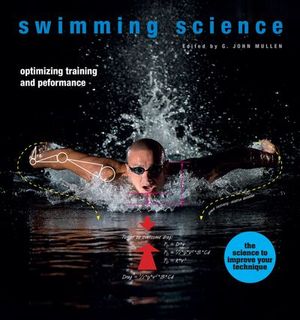Swimming Science
Published by The University of Chicago Press
Discover the secrets of physiology, hydrodynamics, and other scientific aspects of swimming to enhance your skills and speed!
Low-impact, beneficial at any age, and just plain fun, swimming is an excellent workout—and the same scientific principles apply whether you’re competing for a medal or practicing your backstroke in the backyard. Each time you suit up and dive in, your body’s moving parts must work together to propel you through dozens of pounds of water resistance, somehow emulating the movements of species that evolved specifically for the water. What are the physical forces at work when you get in a pool, and what determines whether you will sink or swim?
In this enlightening and useful volume, contributors break down every aspect of the sport. Swimming Science covers physiology, psychology, and safety, as well as hydrodynamics, nutrition, and technique. Each chapter examines these topics through a series of practical questions:
*What are the forces acting on you when you swim, and how do your muscles best generate propulsion against those forces?
*How much protein, salt, and iron should a swimmer consume, and how does energy from carbohydrates compare to energy from fats?
*How important is the “swimmer’s physique” in competitive swimming, and is technique or strength more necessary for generating speed?
These questions and more are examined with the aid of explanatory diagrams and illustrations. No matter whether you swim for exercise, enjoyment, or athletic achievement, Swimming Science adds a new dimension to the sport.
“Swimming Science is a wonderful read for those interested in understanding how extraordinary athletes have been able to swim at incredible speed. But it is also an inspiring and potentially transforming read for ordinary people for whom swimming is simply a love story with the water.” —American Journal of Public Health
Low-impact, beneficial at any age, and just plain fun, swimming is an excellent workout—and the same scientific principles apply whether you’re competing for a medal or practicing your backstroke in the backyard. Each time you suit up and dive in, your body’s moving parts must work together to propel you through dozens of pounds of water resistance, somehow emulating the movements of species that evolved specifically for the water. What are the physical forces at work when you get in a pool, and what determines whether you will sink or swim?
In this enlightening and useful volume, contributors break down every aspect of the sport. Swimming Science covers physiology, psychology, and safety, as well as hydrodynamics, nutrition, and technique. Each chapter examines these topics through a series of practical questions:
*What are the forces acting on you when you swim, and how do your muscles best generate propulsion against those forces?
*How much protein, salt, and iron should a swimmer consume, and how does energy from carbohydrates compare to energy from fats?
*How important is the “swimmer’s physique” in competitive swimming, and is technique or strength more necessary for generating speed?
These questions and more are examined with the aid of explanatory diagrams and illustrations. No matter whether you swim for exercise, enjoyment, or athletic achievement, Swimming Science adds a new dimension to the sport.
“Swimming Science is a wonderful read for those interested in understanding how extraordinary athletes have been able to swim at incredible speed. But it is also an inspiring and potentially transforming read for ordinary people for whom swimming is simply a love story with the water.” —American Journal of Public Health
BUY NOW FROM
COMMUNITY REVIEWS
